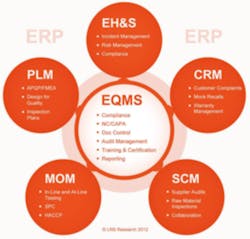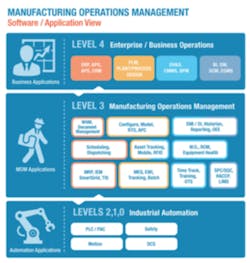If it takes a village to raise a child, then it takes an entire organization to raise an operational metric. As a leader, there’s no doubt you spend a lot of time thinking about goals and how to achieve them. However, whether your focus is on profitability, energy, manufacturing efficiency, product quality, or customer service, the reality is that those high-level objectives are only attainable when everyone in the company is doing their part.
While personnel from the shop floor to the top floor have different roles and responsibilities, the connection between their contributions and progress toward those goals is in the visibility provided by metrics. A strong metrics program can quantify efforts of different business units and departments, and then roll them up to show impacts to overall business performance. It’s typically many small improvements that drive significant ones.
To provide perspective, take for instance a single company with 100 manufacturing facilities around the world. If you’re an executive with pressure to improve profitability, making it an initiative to optimize supplier quality metrics like incoming quality and also manufacturing metrics like first-pass yield across those 100 sites could have a dramatic effect to your operating margins. This is, of course, easier said than done.
Building a company that makes metrics part of its daily operation takes a strategic approach.
Promote, Perform, Standardize
Here are 10 tips for transforming the role of metrics in your organization.
1. Promote metrics performance as an executive issue
Without executive support, the likelihood that any enterprise-wide initiative will have a lasting impact is slim to none. Leaders should regularly look at the metrics that matter most to the strategic initiatives they’re responsible for and get involved with efforts to improve them.
2. Make metrics performance highly visible and part of routine meetings
At all levels of the organization, daily, weekly, and monthly meetings take place. By making current performance highly visible to everyone, it shows the importance and enables people to take proactive steps to improvements. By adding a review of metrics to every meeting agenda, this helps to verify that employees are aware of performance and is also critical to avoiding any surprise impacts to performance.
3. Standardize the way you calculate metrics across the enterprise wherever possible
If every plant is calculating the cost of quality or overall equipment effectiveness (OEE) differently, identifying trends at the global level will be resource consuming. Standardizing calculations across plants is vital for identifying which plants are having more success than others.
Quantify, Incentivize, Empower
4. Quantify metrics performance improvements in terms of dollars and cents
Nothing resonates more than financial impact. Quantifying percentage changes in metrics performance can help draw focus on areas that require more or less resources and can shed light into areas that otherwise may have never received executive attention. This will also help to get your employees motivated as they can see how their actions impact the financial performance of the organization.
5. Incentivize improvements in metrics performance
Whether it’s tied to financial compensation or some other type of in-kind compensation such as “Plant of the Year,” it’s human nature to respond to incentives.
6. Empower employees with knowledge of how their actions impact metrics performance
Educating employees through internal training programs can transform their role from a reactive to a proactive one. Coupling that education with an understanding of the impact to metrics performance makes them an even greater asset.
Automate, Develop, Invest, Promote
7. Automate the collection of metrics data where possible
Disconnected IT – data sources and systems – is one of the biggest roadblocks to performance improvements. Market leaders are investing in solutions that streamline metrics data to operator, plant manager, and executive dashboards. Many of these capabilities come standard in Enterprise Quality Management Software (EQMS), Manufacturing Operations Management (MOM) software, and Industrial Energy Management Software (IEM).
8. Develop a portfolio of different metrics for each stage of the value chain
It’s important for your employees to understand that it’s a combination of metrics and KPIs that drive improvements to business performance. Metrics like OEE can indicate high-level manufacturing performance, but identifying where those improvements are coming from requires a drill-down into quality, efficiency, and availability metrics.
9. Invest in technologies that make metrics information readily consumable
In the past, it was necessary to rely on spreadsheets and tables built in Excel to analyze metrics data – but not an efficient strategy. Today’s analytics and manufacturing/business intelligence capabilities make it easy to analyze information and drill down into the root causes of variability.
10. Promote a culture of “continuous improvement”
A metrics-minded organization is a waste if you aren’t encouraging a culture of Continuous Improvement. Again, this starts at the top and trickles down through the ranks to other employees. In many cases it’s the endless achievement and establishment of even higher goals that separates top performers from the rest of the pack.
Market leading companies are using these and other tips to ingrain a metrics-minded culture across the enterprise, and reaping significant benefits from this strategic investment.
To learn more about the metrics that are driving the most business value for manufacturers today, or contact LNS Research for a free report, “Enabling Operational Excellence with Manufacturing Metrics.”
Mehul Shah is a senior associate and principal analyst for LNS Research in Brookline, Mass. Contact him at [email protected].
LNS Research provides executives a platform for accessing unbiased research and benchmark data to improve business performance.









